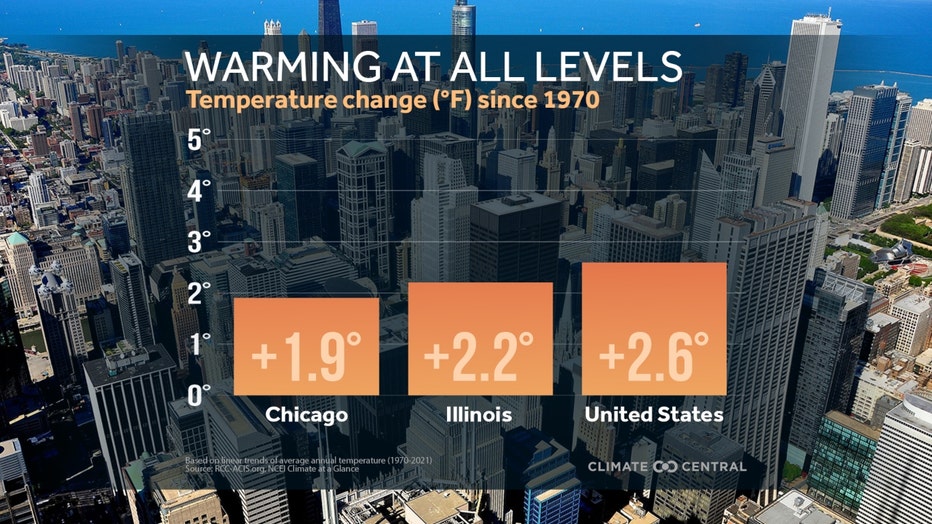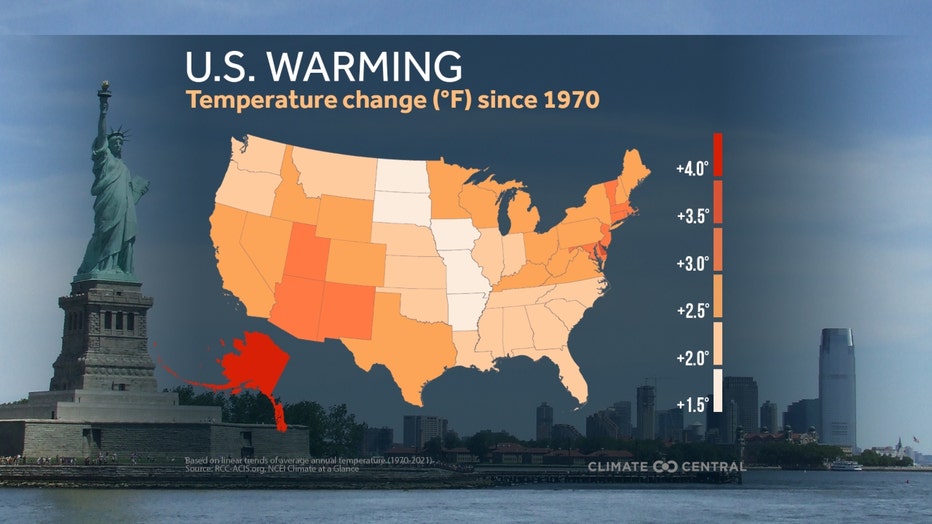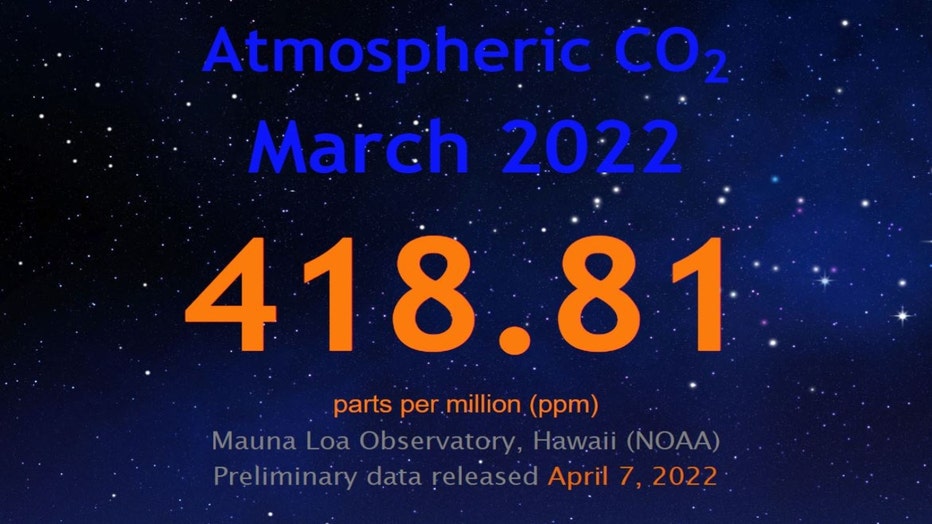Chicago has warmed significantly since first Earth Day
Chicago - Friday marks the 52nd celebration of Earth Day. The modern environmental movement started with the first Earth Day back in 1970.
It's a good time to assess where our environment stands today and address some of the challenges it faces. Climate change has to top the list of those challenges.
Climate Central did an analysis of several cities and towns in our country to see how much they have warmed since the first Earth Day 52 years ago.
DOWNLOAD THE FOX 32 WEATHER APP

Chicago was one of the 246 locations they looked at. Our city has warmed nearly two degrees since 1970. Illinois has warmed just over 2 degrees and the entire country has warmed nearly 3 degrees. Those are big numbers from a climatological standpoint.
Here is a summary of Climate Central's findings:
- The U.S. is 2.6 degrees warmer today than it was in 1970.For context, 2.6 degrees is very close to the global warming limit of 2.7 degrees that 196 countries, including the U.S., have agreed to pursue.
- For context, 2.6 degrees is very close to the global warming limit of 2.7 degrees that 196 countries, including the U.S., have agreed to pursue.
- All 49 states analyzed have warmed by at least 1.8 degrees since the first Earth Day. Alaska was the fastest-warming state by far, due to its high latitude. Melting glaciers and permafrost are contributing to sea level rise and greenhouse gas release.
- Alaska was the fastest-warming state by far, due to its high latitude. Melting glaciers and permafrost are contributing to sea level rise and greenhouse gas release.
- 99% (244) of 246 U.S. cities analyzed have warmed since 1970. 69% (170) of locations have experienced at least 2 degrees of warming. Many of the fastest-warming locations were in the Southwest—a region vulnerable to droughts and heat extremes, which are likely to worsen with climate change.
- 69% (170) of locations have experienced at least 2 degrees of warming.
- Many of the fastest-warming locations were in the Southwest—a region vulnerable to droughts and heat extremes, which are likely to worsen with climate change.

The warming continues this year. NOAA's National Centers For Environmental Information announced Earth just had its fifth-warmest March on record. The global land and sea surface temperature last month was 1.71 degrees above the 20th century average.
The period from January through March this year was also the fifth-warmest on record. It is a virtual lock that this year will rank among the top ten warmest years on record. The January–March global surface temperature was 1.58 degrees above average. The five warmest January–March periods have occurred since 2016.

March CO2 Level (co2.earth)
Heat trapping gasses are giving our Earth a fever. CO2 is the most abundant of these. It has jumped nearly 30% since the very first Earth Day in 1970. The latest monthly CO2 reading is 418 parts per million in our atmosphere.
There are signs of hope we can still make a difference. California just set a record for use of renewable energy. Back on April 3rd 97.6% of electricity on their grid came from renewable energy. Stanford scientists have developed solar energy panels that actually work at night.
Keeping warming to the 3.6 degrees limit many countries have agreed to is immensely challenging but the benefits of limiting warming would probably outweigh the costs needed to mitigate its impacts.
Want to make an impact on our environment? There are Earth Day activities happening all over the country. To find something near you, check out the "Find An Earth Day Event'' tool.

